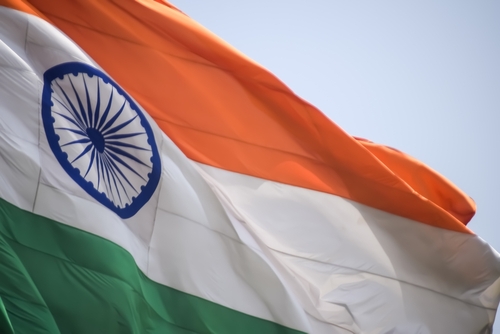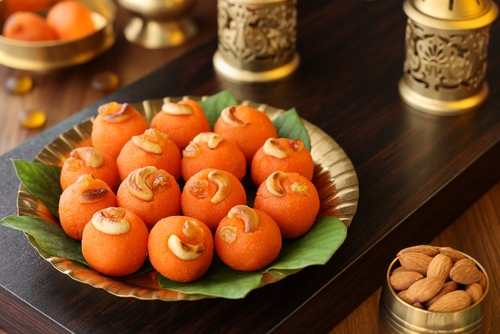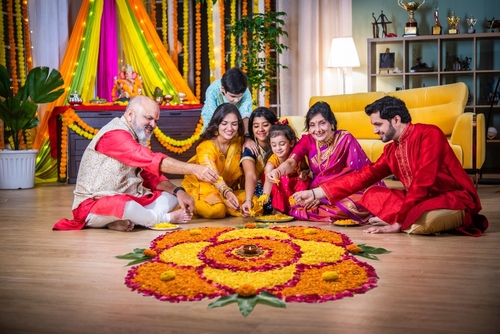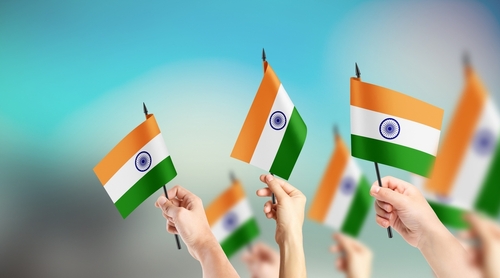India Independence Day stands as one of the nation’s most significant celebrations, marking the end of British colonial rule and the birth of a free India. On August 15, 2025, Indians worldwide will commemorate 78 years of independence with pride, reflection, and renewed hope for the future.
This national holiday brings together millions of people in celebration, from grand ceremonies at the Red Fort in New Delhi to community gatherings in neighborhoods across the globe. Whether you’re planning to participate in local festivities or send support to family back home, understanding the significance and traditions of this day helps you connect more deeply with India’s rich heritage.
For many Indian families living abroad, Independence Day serves as a powerful reminder of their roots and an opportunity to share their culture with the next generation. The day offers a chance to honor the sacrifices of freedom fighters while celebrating India’s remarkable progress as a nation.
The Historical Significance of August 15, 1947
India gained independence from British rule on August 15, 1947, after nearly 200 years of colonial control. This momentous day came after decades of struggle led by freedom fighters like Mahatma Gandhi, Jawaharlal Nehru, and countless others who sacrificed their lives for the nation’s freedom.
The independence movement used various methods of resistance, from non-violent civil disobedience to armed rebellion. Gandhi’s philosophy of non-violence, or “ahimsa,” became a cornerstone of the freedom struggle and inspired liberation movements worldwide.
At the stroke of midnight on August 15, 1947, India’s first Prime Minister Jawaharlal Nehru delivered his famous “Tryst with Destiny” speech, declaring India’s emergence as a free nation. This historic moment marked the end of the British Raj and the beginning of India’s journey as an independent democracy.

How India Celebrates Independence Day in 2025
National Celebrations
The Prime Minister of India hoists the national flag at the Red Fort in Delhi and delivers a speech to the nation. This ceremony, broadcast live across the country and internationally, includes cultural performances, military parades, and displays of India’s achievements.
Security forces, school children, and cultural groups participate in parades across major cities. The Indian Armed Forces showcase their strength and capabilities, while folk dancers and musicians represent the country’s diverse cultural heritage.
Community Celebrations
Schools and colleges organize special programs featuring patriotic songs, speeches, and cultural performances. Students often dress in the colors of the Indian flag—saffron, white, and green—and participate in flag-hoisting ceremonies.
Local communities arrange cultural events, food festivals, and volunteer activities. Many people visit historical sites and monuments related to the independence movement to pay their respects to freedom fighters.
International Observances
Indian communities worldwide organize Independence Day celebrations at cultural centers, temples, and community halls. These events often include flag ceremonies, cultural programs, and traditional Indian food.
Many people use this opportunity to send money to family members in India to support their celebrations or contribute to charitable causes. Reliable money transfer services make it easy to share in the joy of Independence Day, even from thousands of miles away.

Traditions and Customs of Independence Day
Flag Hoisting Ceremonies
The Indian tricolor flag holds deep symbolic meaning. The saffron represents courage and sacrifice, white symbolizes truth and peace, and green signifies faith and chivalry. The blue wheel in the center, called the Ashoka Chakra, represents the eternal wheel of law.
Government buildings, schools, and homes across India display the national flag. The flag-hoisting ceremony typically begins early in the morning, followed by the national anthem “Jana Gana Mana.”
Cultural Programs and Performances
Schools and organizations present cultural programs showcasing India’s diverse traditions. These performances include classical dances like Bharatanatyam and Kathak, folk dances from different states, and patriotic songs.
Many events feature plays and skits depicting scenes from the independence struggle, helping younger generations understand their history. Poetry recitations and speeches about freedom fighters educate audiences about the sacrifices made for independence.
Food and Festivities
Traditional Indian sweets and dishes play a central role in Independence Day celebrations. Many families prepare special meals featuring regional delicacies and sweets like laddu, jalebi, and barfi.
Communities often organize food festivals where people can sample cuisines from different Indian states. These gatherings strengthen community bonds and introduce people to India’s culinary diversity.

Supporting Family and Community During Independence Day
Sending Financial Support
Many Indians living abroad choose Independence Day as a meaningful time to send money to family members back home. This support helps relatives participate in local celebrations, purchase new clothes, or contribute to community events.
Modern money transfer services offer secure and convenient ways to send funds internationally. These services provide competitive exchange rates and reliable delivery, ensuring your support reaches family members quickly and safely.
Contributing to Charitable Causes
Independence Day inspires many people to give back to their communities through charitable donations. Popular causes include education for underprivileged children, healthcare initiatives, and support for veterans and their families.
Some people choose to fund scholarships for students or support organizations working to preserve India’s cultural heritage. These contributions honor the spirit of service that drove the independence movement.

Teaching the Next Generation About Independence Day
Educational Activities
Parents and teachers can help children understand Independence Day through age-appropriate activities. Reading books about freedom fighters, watching historical documentaries, and visiting museums provide valuable learning experiences.
Many families create timeline projects showing key events in India’s independence struggle. These activities help children connect with their heritage and understand the significance of freedom.
Cultural Engagement
Learning traditional Indian songs, dances, and crafts helps children connect with their cultural roots. Many community centers offer special Independence Day workshops where kids can participate in flag-making, rangoli designs, and cooking traditional foods.
Encouraging children to learn about different Indian states and their contributions to the independence movement broadens their understanding of the country’s diversity and unity.
Frequently Asked Questions About India Independence Day
When is India Independence Day celebrated?
India Independence Day is celebrated every year on August 15th. In 2025, this falls on a Friday, making it perfect for extended celebrations and community gatherings.
Why is August 15th significant for India?
August 15, 1947, marks the day when India gained independence from British colonial rule after nearly 200 years. This date represents the birth of modern India as a free and democratic nation.
How do Indians abroad celebrate Independence Day?
Indian communities worldwide organize cultural events, flag ceremonies, and traditional food festivals. Many people also participate in virtual celebrations and send financial support to family members in India.
What is the significance of the Indian flag?
The Indian tricolor represents important national values. Saffron symbolizes courage and sacrifice, white represents truth and peace, and green signifies faith and valor. The Ashoka Chakra in the center represents the eternal wheel of dharma.
Can non-Indians participate in Independence Day celebrations?
Yes, Independence Day celebrations welcome people of all backgrounds who wish to learn about Indian culture and history. Many community events encourage multicultural participation and friendship.
How Does Egypt Revolution Day Compare to India’s Independence Day in Celebrating Freedom?
Egypt Revolution Day and India’s Independence Day both celebrate the hard-fought struggle for freedom, yet they embody different historical narratives. While Egypt’s Revolution Day marks the uprising against oppression, India’s Independence Day symbolizes the end of colonial rule. Together, they highlight egypt’s journey towards freedom and democracy, showcasing diverse paths to liberation.
Honoring India’s Journey Forward
India Independence Day 2025 represents more than a historical anniversary—it celebrates the ongoing journey of a nation that has transformed itself from a colonial territory into a global democracy. The day reminds us of the power of unity, determination, and peaceful resistance in achieving justice and freedom.
As you participate in Independence Day celebrations this year, consider the various ways you can honor this legacy. Whether through cultural engagement, community service, or supporting family members, your actions contribute to the continuing story of Indian independence and progress.
For those supporting loved ones from abroad, reliable money transfer services provide a meaningful way to share in the celebration and show your connection to India’s rich heritage. This Independence Day, celebrate not just the past achievements but also the bright future that lies ahead for India and its people worldwide.
